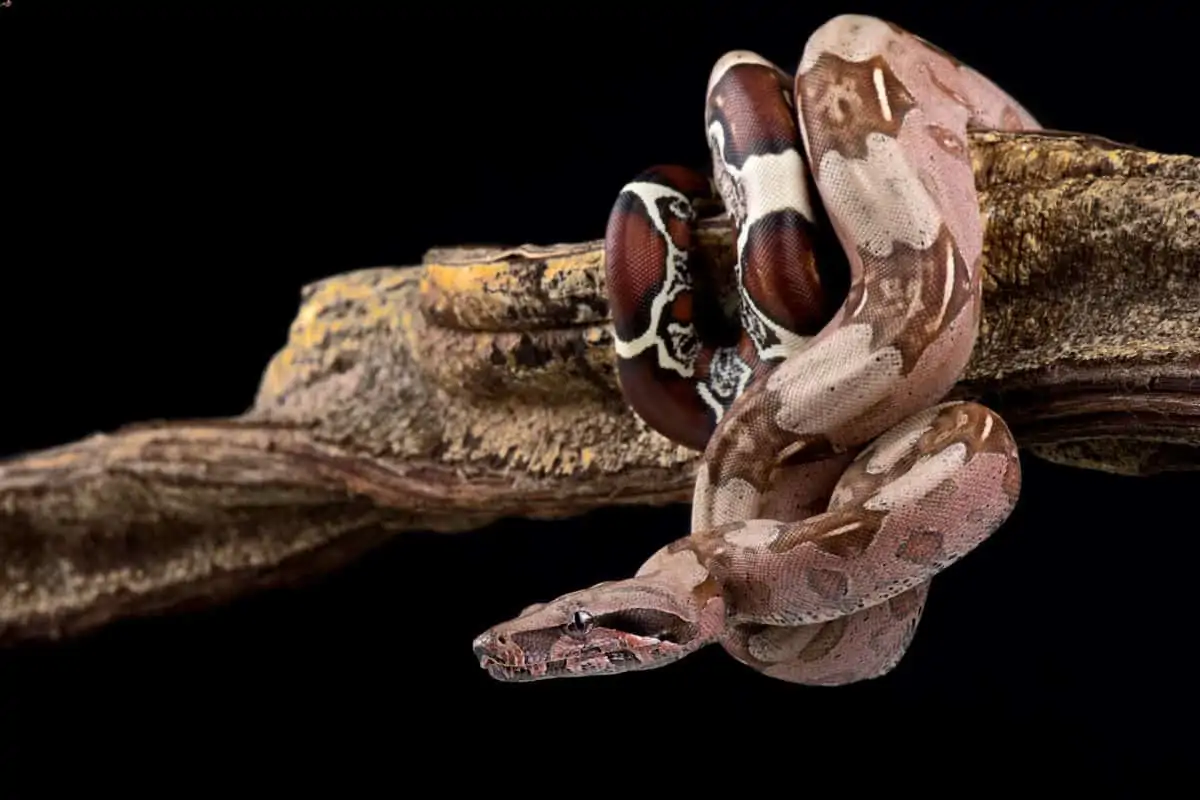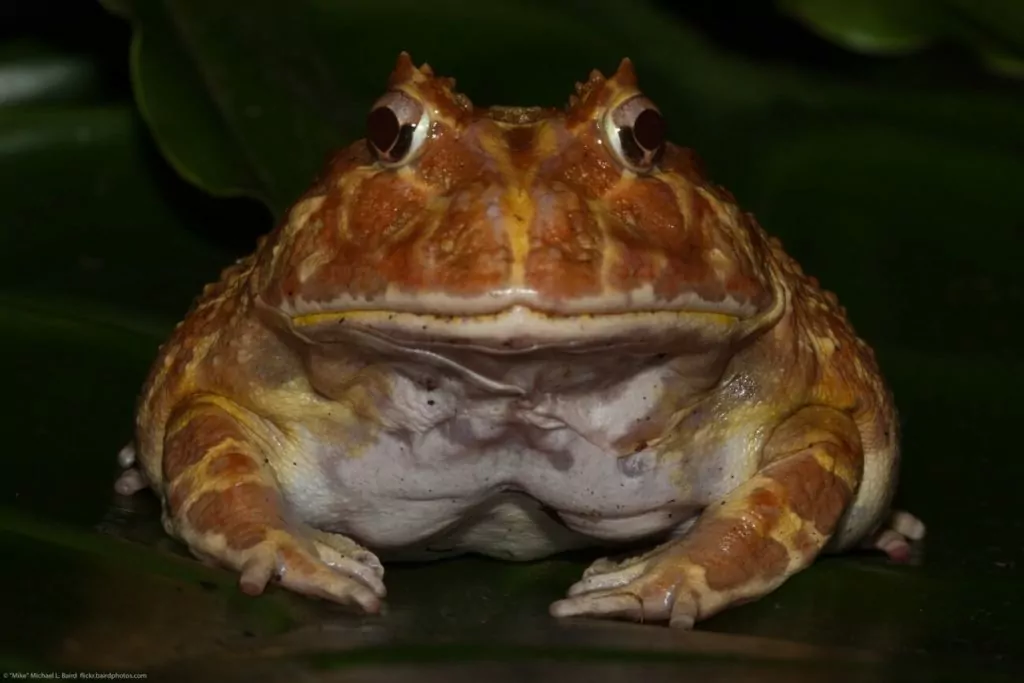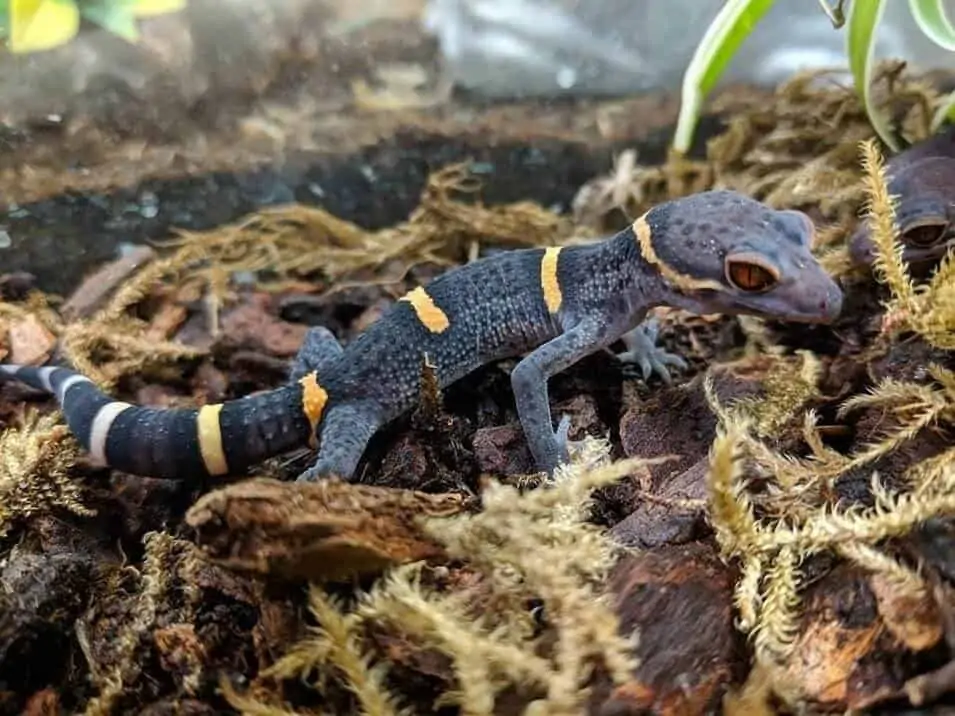The Suriname red tail boa is a gorgeous snake that’s quite a joy to own. Not only are they quite fun to look at, but they’re low-maintenance with a gentle temperament!
But it’s very important to have a firm understanding of their care requirements before you get one for yourself. These are large snakes with some specific needs that need to be met.
This guide will make things easy for you. In it, you’ll learn everything you need to know about Suriname red tail boa care!
Table of Contents
Species Summary
A sought-after reptile among snake lovers, the Suriname red tail boa is both rare and beautiful. This snake is technically not a separate species (just like the Colombian red tail). It’s part of the boa constrictor family.
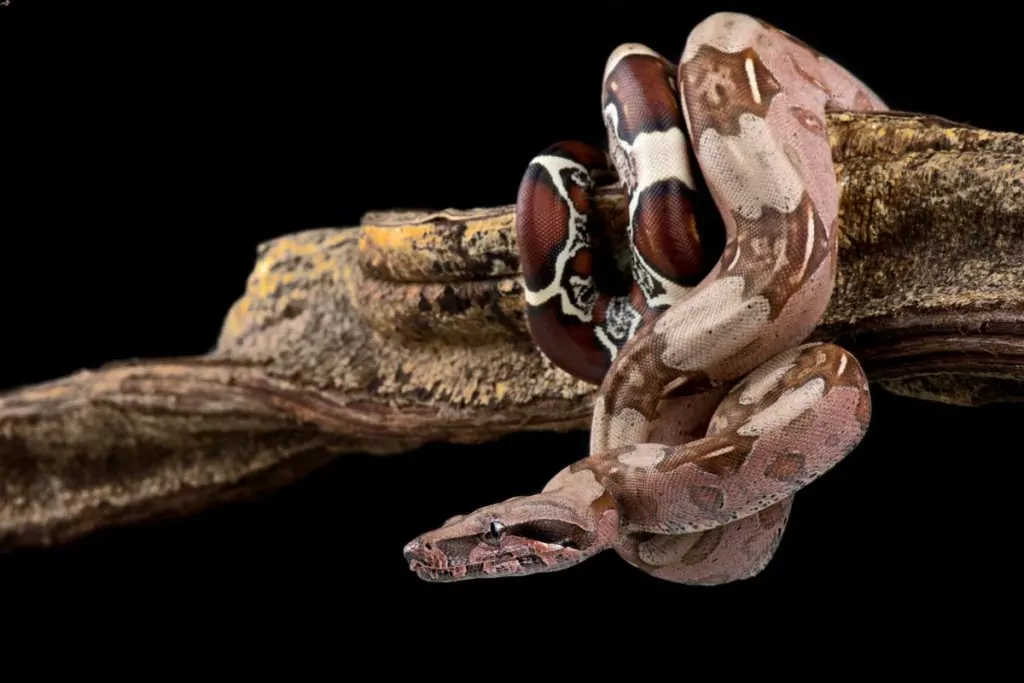
These reptiles come from the small country of Suriname, which is on the northern coast of South America. Boa constrictors from this region display unique colors and patterns based on their locality. Even within Surinam, these snakes can vary greatly when it comes to looks!
As a result, Suriname red tail boas are highly sought after in the snake trade. Their stunning good looks are quite distinct. Plus, their easy-going nature makes them a joy to care for.
Appearance & Colors
Suriname red tail boas are large and heavy-bodied snakes. They can reach impressive lengths and have significant girth!
The head is triangle-shaped and features a pronounced snout. While not venomous, these snakes do have powerful muscles that they can use to constrict their prey.
When it comes to color, there’s a lot of variety out there! Most are going to have a base coloration of light brown. Darker brown saddles and splotches adorn most of the body. You might even see some flecks of black or pinkish coloration on the sides.
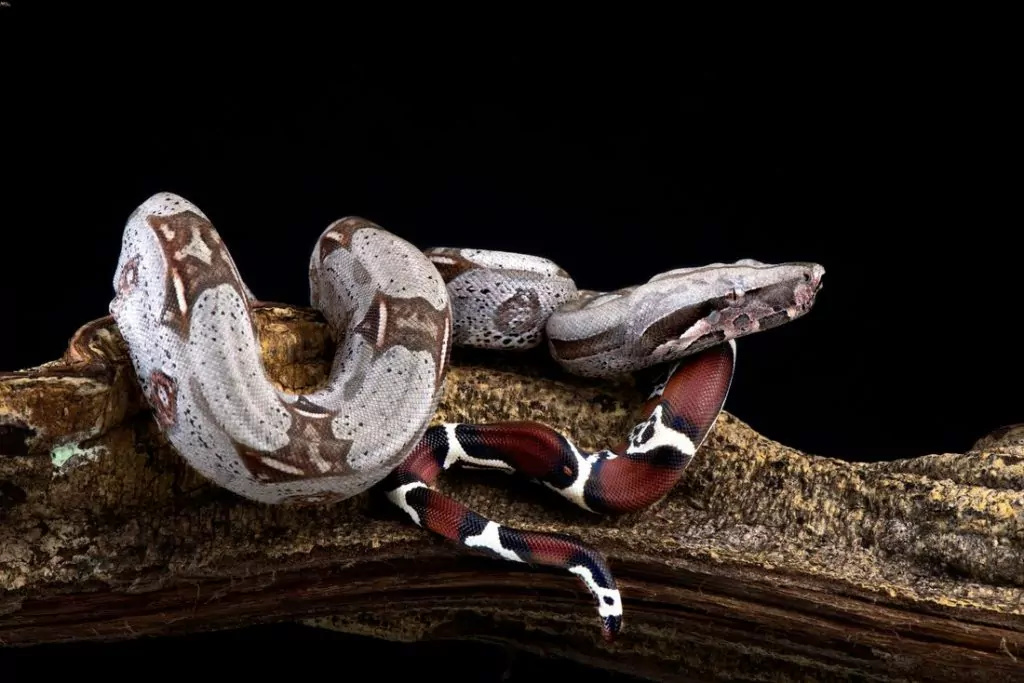
Regardless of the snake’s colors and patterns, all will have one distinct trait. These snakes get their name from the intense coloration on the tail.
The light brown coloration turns into a vibrant reddish-brown color. The saddles also take on deep black outlines with white highlights.
The difference between the tail and the rest of the body is unmistakable. It’s as if someone took a desaturating tool to the front half of the body while boosting the contrast on the tail!
Suriname Red Tail Boa Size
The typical Suriname red tail boa size is six to eight feet for females, and five to six feet for males. These are not small snakes!
That said, they are capable of getting bigger than that. There are many reports of females growing to 10 or 12 feet in length! However, those instances are not very common in captivity.
Expert Tip: We would consider the growth rate of the Suriname red tail boa to be moderate and steady. It shouldn’t take you by surprise.
Lifespan
The lifespan of a Suriname red tail boa is about 30 years. Like other boa constrictors, these snakes have a long life expectancy.
Some have lived even longer than that in captivity. But again, those occurrences are not very common.
Suriname red tail boas need high-quality husbandry and attention to reach the upper limits of their lifespan. Without a proper diet or living conditions, their life expectancy will likely shorten dramatically.
Suriname Red Tail Boa Care
Suriname red tail boa care isn’t any more difficult than other boa constrictors. However, these snakes can be a handful to those who aren’t used to the needs of such large reptiles!
Fortunately, these pet snakes are rather low-maintenance. You should be fine as long as you understand their requirements and commit enough time for proper husbandry.
Whether you’re a new snake-owner or a seasoned hobbyist, here are the important care guidelines you need to follow.
Enclosure Size
Your snake’s new home needs to be sizable, but not excessive (which might seem strange considering how large they get).
These reptiles do best in glass terrariums with a screen lid. If you have a rack system, Suriname red tail boas can also live in plastic tubs.
We recommend using a tank that can hold at least 80 gallons. Generally, tanks of this size measure about 48 inches long, 14 inches tall, and 30 inches wide.
Expert Tip: Make sure to invest in a tight-fitting lid. These snakes are strong and fully capable of escaping if given the opportunity!
Habitat Setup
You can keep things simple when it comes to decorations and their overall habitat setup. Suriname red tail boas are terrestrial creatures that value open floor space.
First, start with a layer of a moisture-absorbing substrate.
One of the best options is cypress mulch. Avoid any type of mulch or bark that has natural oils. Also, stay away from sand, pebbles, or anything else that could harm your snake.
Expert Tip: If you’re on a budget or want to keep things simple, newspaper and reptile carpet work well, too!
Beyond the substrate, the only additional item you need is a hide box. Get a plastic or wooden box that’s big enough for the snake to curl up inside. You can stuff it with moist sphagnum moss as well to give your snake an extra humid area to relax in.
You can provide a couple of climbing surfaces or fake plants to create a natural-looking environment. However, those extras aren’t required. Your Suriname red tail boa will live comfortably all the same!
Temperature & Lighting
Suriname red tail boas are cold-blooded animals that thermoregulate by moving to different temperature zones. Because of this, you need to create a temperature gradient in their habitat.
Here are the different temperature ranges to know:
- On the cool side, keep temperatures around 78°F.
- For the hot spot, you can use a basking lamp or ceramic heat emitter to raise temperatures to around 90°F.
- Nighttime temperatures can dip down to 72°F. But, you’ll need to use a heat emitter or under-tank pad if nightly temperatures fall below that.
UVB lamps aren’t necessary for this pet snake. However, many owners choose to use one anyway due to some of the theoretical health benefits. If you choose to go this route, pick a large UVB lamp that can cover the entire enclosure for about 10 hours a day.
Humidity
Most reptiles from muggy environments in South America are going to need substantial humidity levels. The Suriname red tail boa is no different!
These snakes need humidity levels of around 70 percent at all times!
Choosing the right substrate material will help make this possible. Mist the enclosure daily and let the substrate soak some of that moisture in. You can also adjust any air vents or loosely cover the mesh top to trap humidity.
Expert Tip: We always recommend getting a reliable and accurate hygrometer. This tool will help you stay on top of humidity levels and avoid any second-guessing.
Poorly made hygrometers can give you inaccurate humidity readings, causing you to make chances that aren’t necessary!
Water
Don’t expect to see your new Suriname red tail to lap up water. It’s quite rare to see snakes drink from a bowl.
But despite this, you should still have some kind of water dish in the enclosure just in case. Many snakes like to soak in the water. Plus, this water dish can help to support consistent humidity levels inside the enclosure!
Pick a large dish that’s fairly deep and wide. Ideally, your Suriname red tail boa should be able to get in easily for a soak.
Food & Diet
Carnivores in every sense of the word, Suriname red tail boas only eat animals! The best choice is rodents, which are easy to source and relatively affordable. You can provide feeder mice, hamsters, rats, and anything else that’s appropriately sized.
Expert Tip: All rodents should be no bigger than the widest part of the snake’s body.
For this particular species, many owners prefer frozen mice. That’s because live rodents can potentially cause unwanted injuries and scratches during the feeding process (although this is rare). Let the rodent thaw to room temperature before feeding.
Young juvenile snakes will require weekly feedings. Meanwhile, adults can get by when eating every 10 days or so.
Potential Health Issues
Suriname red tails can suffer from a wide range of diseases. Some common health issues to look out for include snake mites, respiratory infections, scale rot, and bacterial infections.
The good news is that most of these problems are avoidable with proper enclosure maintenance and good care.
Pick up messes and spills every day, then do a deep clean roughly once a month. During this cleaning, you must sanitize every surface with a reptile-safe disinfectant.
Expert Tip: Many Suriname red tails these days are imported. If that’s the case for your snake, make sure to take them to the vet right after purchasing them. Imports are far more likely to have parasites and diseases that could impact their health if not addressed.
Behavior & Temperament
The Suriname red tail boa is a docile and easy-going snake.
At first, it can be a bit shy. This is very common in new environments. However, it will quickly warm up to its new home. If you have a hide box to provide some shelter and security (which you should), it will get comfortable even quicker.
Suriname red tail boas aren’t known to bite or show any aggression towards humans. That’s not to say that they can’t, but it’s quite rare.
Always respect your snake’s boundaries and do your best to create a comfortable environment. Throughout the day, these snakes will spend most of their time lounging around and relaxing.
They’re not super active, but they are a joy to look at nonetheless!
Handling Them
Handling isn’t a problem with Suriname red tail boas. In fact, it’s encouraged!
Regular handling has a big impact on their overall temperament and the level of enrichment they get over the course of their life.
Suriname red tails that are handled regularly from a young age tend to be more social and accepting of humans. Meanwhile, those that are neglected may exhibit more anxious behaviors.
When you handle your snake, support its body and let it wrap around your arm. As always, pay attention to their temperament. If they seem a bit standoffish, don’t push things. Give your snake some space and try again later.
Expert Tip: Always avoid handling before or after feedings. It’s also a good idea to have a separate feeding container. Otherwise, the snake may associate your hand with food and try to strike when you want to handle it.
Conclusion
Suriname red tail boa care is quite straightforward. These snakes are rather low-maintenance and easy to please!
While these snakes will spend a lot of time lounging in the enclosure, their stunning looks make them entertaining nonetheless. They’re also great pets for handling, making them even more fun!
We highly recommend these snakes for anyone who has the space and time to care for them. You won’t regret it!

